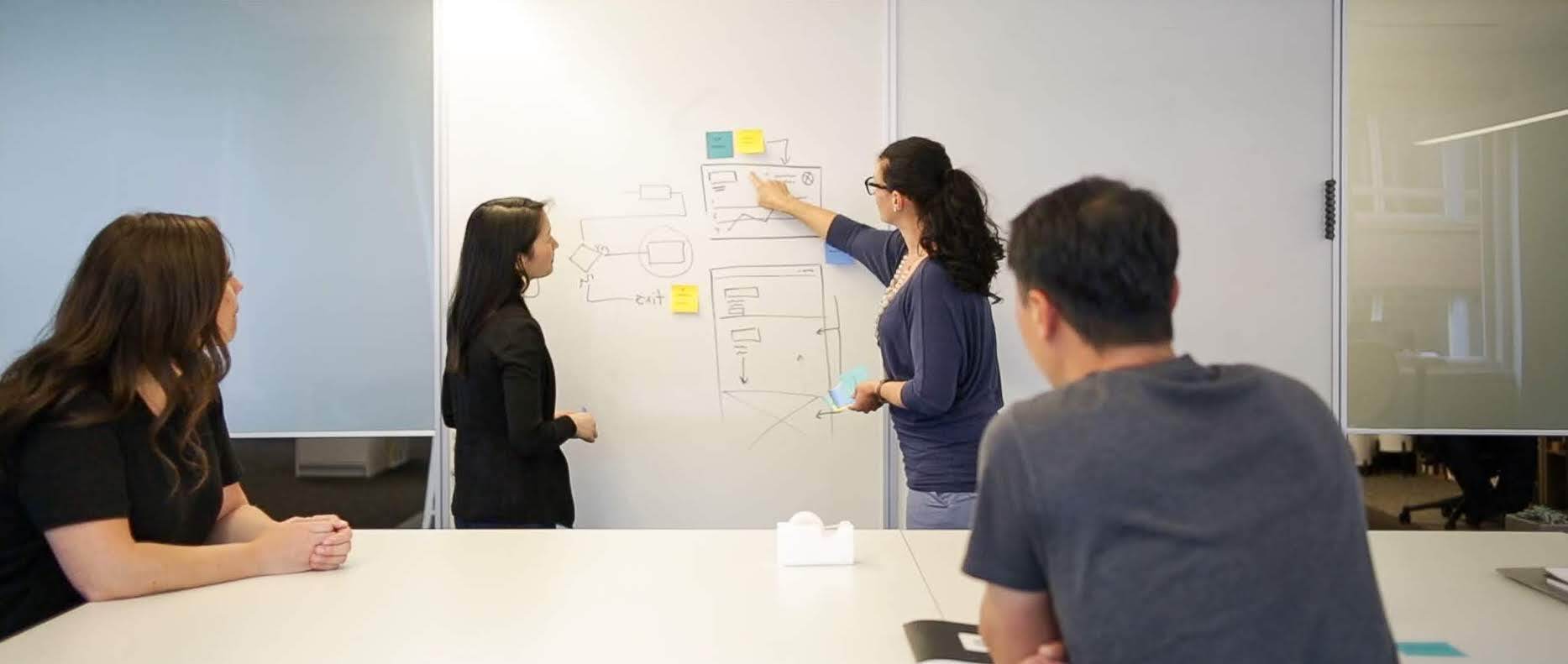
By
McKayl Barrows
You open the Starbucks app to order your double macchiato. You call your dentist to schedule your next cleaning appointment. You crank up the heat on your Nest thermostat. You settle into your couch and begin shuffling through Hulu’s latest recommendations.
Chances are you’ve found yourself in one, or all, of these scenarios before, but what do these simple, seemingly unrelated tasks have in common?
Each has a unique user experience.
User experience, or UX, is the end-to-end interaction a customer has with a system, service, or product
Let’s break that down using the Starbucks mobile app as our example:
You see an advertisement for Starbucks that prompts you to order your go-to drink via their mobile app. You open the app on your phone and notice how quickly it loads. The app is easy to navigate and you hit the “Order” button to get started. Since you have used the app before, your typical drink order is saved in the “Previous” tab. You click “Add to Order” and head over to your cart to complete the sale. You select the store nearest you for pickup and, since your card is already saved, all that’s left to do is tap “Order.”
When you arrive at the store, you pull into one of the “Mobile Order & Curbside Pickup” parking spots right out front. The barista says a friendly “hello” as you grab your drink and head back to your car. You take the first sip of your drink and think, “Mmm, delicious!”
Each step in your coffee-ordering process — from seeing the advertisement to taking that first sip — dictates an element of your user experience. As you can see, the user experience is not limited to the user interface and visual design of the app, instead it includes the moments before, during, and after you place your coffee order.
Now that we know the “what” behind user experience, let’s take a look at where it came from, what makes it effective, why it is important for your company, and where it is going.
The history of User Experience
Don Norman, dubbed the “Godfather of UX,” is a cognitive physiologist and usability engineer.
Norman coined the term “user experience” in 1993. His research stems from the field of human-computer interaction (HCI), which focuses on designing products and systems that prioritize the end user. Instead of focusing on just the physical product design, Don uses a holistic and empathetic design approach that includes the physical product design and the experience the customer will have with the product.
“No product is an island. A product is more than the product. It is a cohesive, integrated set of experiences. Think through all of the stages of a product or service — from initial intentions through final reflections, from first usage to help, service, and maintenance. Make them all work together seamlessly.” — Don Norman, Co-Founder of Nielsen Norman Group
Although the term “user experience” was developed less than 30 years ago, early signs of UX design date back to 4000 B.C. with the creation of Feng Shui.
Feng Shui is the practice of arranging a physical space to promote balance, comfort, and ease of use. Similar to a great user experience, Feng Shui uses an understanding of human behavior to achieve this goal.
The 1940s is also an important time to note in the history of user-centered design. During World War II, the military began investing in the field of human factors and ergonomics to ensure optimal performance of military personnel and systems.
These design principles built a foundation for the leading methodologies of high-quality, user-centered design that we see today.
What makes “Good UX”?
Good UX creates an effective user experience. Crafting a good user experience involves understanding the user, and making intentional, user-centered decisions in every step of the design process. Design solutions vary from project to project. Since each project solves a different problem for a unique set of users, not all user experiences look the same. Despite these differences in design, every effective user experience has a few fundamental elements in common. Good UX is:
- Intuitive — a product should be so easy to use that customers can navigate the product or system without flipping through a how-to manual.
- Beautiful — products that are aesthetically pleasing and have a well-designed information architecture are more enjoyable to use.
- Useful — a product’s functionality should anticipate the user's needs and help solve a problem.
- Meaningful — fulfilling products enrich our lives by allowing us to use technology to build communities, create efficient workplaces, and connect with loved ones.
- Seamless — a product should fit into the user’s life so smoothly, they hardly realize it’s there. At Blink, our goal is to make technology human. Prototyping allows us to ensure that products will enhance the user’s life rather than distract from it.
- Accessible — a product should provide an experience that is easy to use for users of all abilities across a range of technologies.
Why is UX important?
The way a customer uses your project, service, or system is the way they perceive your brand. Think about it this way. If you feel content, confident, and inspired while using a product, you are more likely to recommend it to your friends, leave a positive review, or use the product again. These actions are likely a result of a great user experience.
At Blink, we view UX as a business strategy. It is important to prioritize the user experience because great UX design results in happy customers, and happy customers result in more business, better reviews, and higher credibility.
Crafting a user-centered design is not just the responsibility of the UX designers. Business stakeholders, interaction designers, cognitive scientists, developers, and user researchers all have unique skill sets and play a key role in creating the overall user experience of the final product.
The future of UX
Today, most UX design and research incorporates interaction design (IXD), user interface (UI) design, and user research of two-dimensional screens delivered on smartphones and computers. With the development of emerging technologies like artificial intelligence and virtual reality, we can do more than ever before.
Despite this evolution of technology, the foundation of the user experience remains the same. As a UX research and design firm, it is our responsibility to remain flexible with the changing landscape of technology and ensure these new products continue to enrich the user's life.
UX is all around you
The next time you order your coffee, change the heat on your thermostat, surf a streaming service, or make a call to book an appointment, take note of how you feel while using that product or interacting with the service. This practice will have you well on your way to answering the question, "What is UX?"



